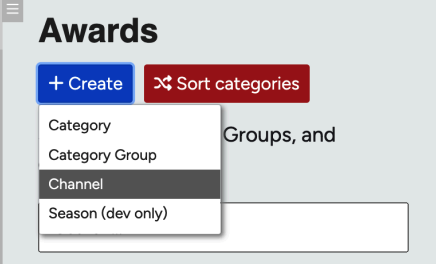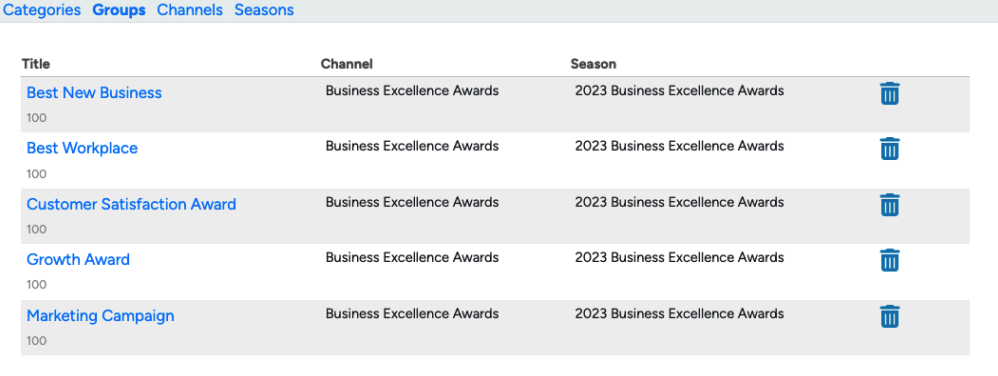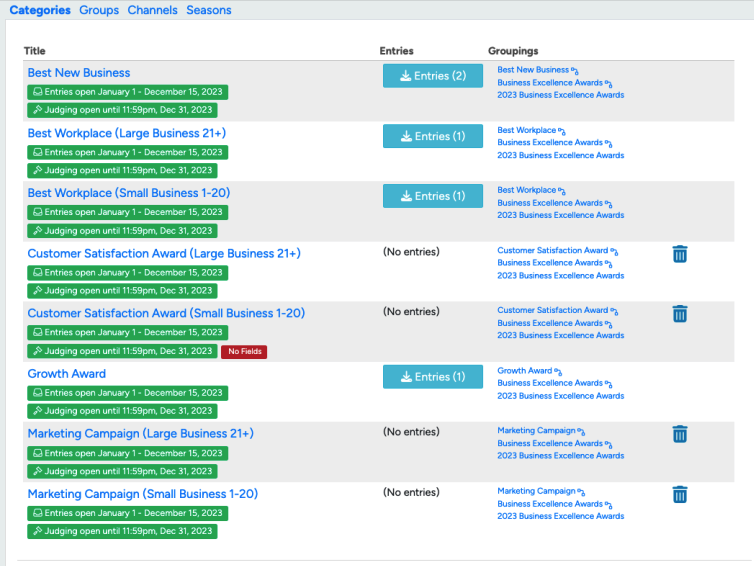Awards Seasons, Channels Groups and Categories
Read through the post below to learn about the sorting options for your Awardify account, or watch the video to see the process. You can also download this post in pdf form: Awards Seasons, Channels, Groups and Categories.

The Awards menu lists ‘Categories’, ‘Groups’, ‘Channels’ and ‘Seasons’. This is an overview of what is controlled in each of these areas. To see instructions about the Seasons in more detail, check out the ‘Edit Season’ video and document and for instructions about setting up your awards Categories see ‘Setting up Categories’.
Use the ‘+Create’ button to add to any of these areas.
Your Awards Season is the largest umbrella for your program. This is typically updated every year, as your Awardify subscription renews. To add a new season, you may hit the ‘+Create’ button, however it is recommended that you ‘Clone’ your existing season. This will keep all of your settings, pages, and categories so that you will not need to start from scratch.

Channels are the next level of organization for your awards. If you have many different layers to your awards system, the channels option can help with organization. If not, leave your Channel with a generic name, and move on to groups.


To create a channel, click ‘+Create’ and Channel.
There are a few basic fields to fill out in your channel set up, including adding a Title, Description, Entry Fee if applicable, and a few dates. Dates should only be entered here if they are different from your regular season dates.

Creating groups is even simpler than channels. Groups just need a name, and then to be assigned to a channel. Include a brief description if you would like, and save.
Lastly you have categories, for a set-by-step guide on how to create your categories, please see the ‘Setting up Categories’ video and document.
For a general overview, the Categories are the place you will set up your entry form and judging criteria. All of the information that the public will see about your awards categories will be set up here, including the Title, Description and Requirements.

